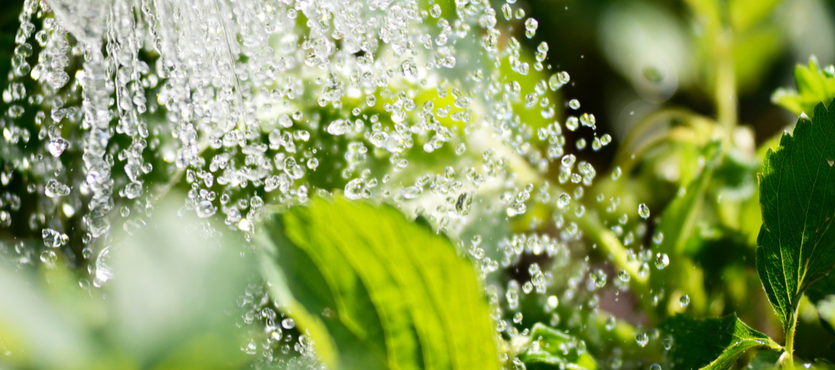Depending on where you live and work, winter container gardening can present a challenge. Whether your region faces fluctuating winter temperatures, harsh sunlight, high winds, or freezing conditions, protecting your plants against root damage is the key to successfully protecting your plants in winter. The challenge exists even with plants indigenous to your area, because while the top of the plants can enter dormancy, the roots do not. Generally, new, young roots are located on the outer layers of the root ball, so when exposed to colder temperatures they can become damaged or die, unlike older, mature roots which can adjust to changing temperatures. Plants in the ground are naturally insulated by the surrounding earth, while plants in containers have less insulation during cold winter months. Here are some tips for protecting your plants during winter conditions.
Planting the Plants
When planting in your planter, early is better than later. The earlier you plant, the greater opportunity for your plants to develop mature roots and thus tolerate winter temperatures and fluctuations more effectively. By selecting plants up to two zones cooler than your region, you’ll give your plants greater opportunities for winter survival.
Selecting the Planter
Selecting the right planter can pose as great a challenge as choosing the right plants. Planters come in all shapes and sizes and are made of a variety of materials. Depending on where you live, some materials will perform better than others. For example, porous planters like ceramic and terra cotta, are prone to cracking and breaking when temperatures alternate between freezing and thawing during the winter. Wooden container, while durable, alternate in strength and longevity based on the type or wood as well as the amount of elemental exposure in the winter months. Concrete and metal containers can withstand the harsh conditions of winter but are difficult to move once positioned. Plastic planters can also withstand the elements but tend to crack over time.
Resin planters, by TerraCast Products, are crafted from Linear Low-Density Polyethylene and are durable and long-lasting, virtually indestructible even in challenging winter weather conditions. Plus, TerraCast resin planters, like the Brooklyn with its clean lines or the Roman Round with its timeless attention to detail, provide the perfect container to protect your plants year to year looking great and performing well.
When choosing a planter for winter, bigger is generally better. A large container with sufficient volume will have enough soil to protect your plant and insulate the roots during the winter. Smaller planters often allow the contents to freeze more quickly. Choosing a larger planter with a thickness of at least one inch, preferably more will help keep your plants thriving through the winter months.
Location is Crucial
The placement of your planters outside can also help keep your plants hardy all winter long. In winter, choosing a location on the northern side or eastern side of your home will help plants avoid the temperature fluctuations which come with southern facing positions. The freeze/thaw cycle can damage roots, so in addition to placement for exposure, you’ll also want your planters on the soil, as opposed to pavement, pavers, or concrete. The soil beneath the planters will help keep the temperatures within steady, unlike those planters placed on pavement where temperatures tend to fluctuate more when days are sunny and nights are cold.
Watering in Winter
You need to ensure your plants are properly watered in winter, as winter often has less rainfall than the rest of the year. Always water during the day when temperatures are above freezing. Doing so will help insure your plants survive and thrive this winter and be ready to flourish when spring arrives.

